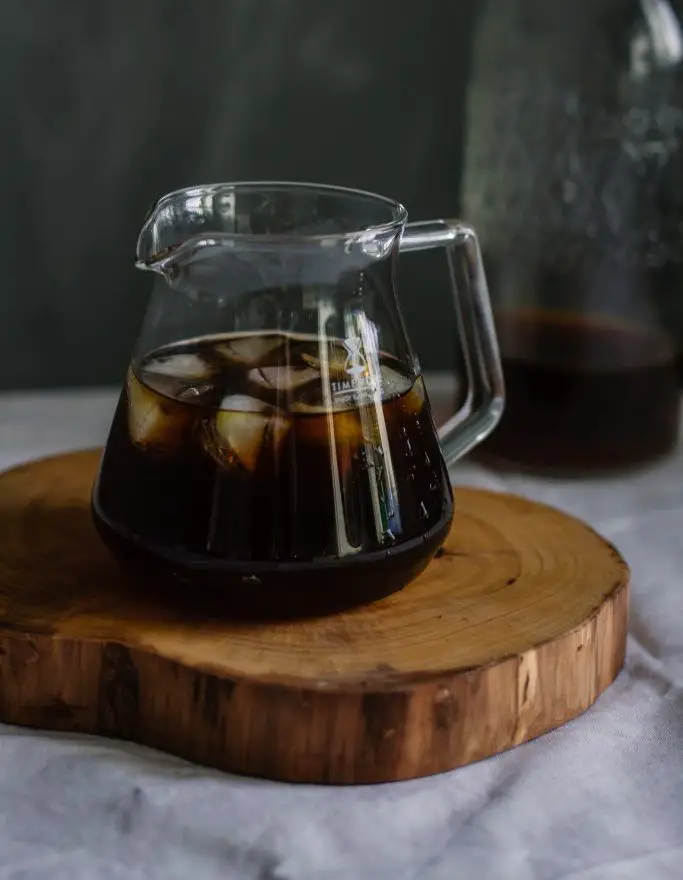Cold brew coffee is the “in” kind of coffee to make these days, and the smooth, sweet flavor really leaves very little more to be desired.
However, critics of the traditional cold brew method note that cold brew does not have any acidity. While some people drink cold brew especially for the low acid content, many coffee lovers miss the acidic kick from hot brewed coffee.
To solve this issue, a new type of cold brewing method has come about called hot bloom cold brew.
Hot bloom cold brew? What?
Try saying hot bloom cold brew very fast. What a tongue twister!
Essentially, proponents of the hot bloom cold brew method adapted one key part of hot brewing into their method – blooming the coffee by adding a small amount of hot water. This helps release all of the stored carbon dioxide in the grounds, enabling the rest of the water to better interact with the coffee.
If you were to add all the hot water at once, all the escaping carbon dioxide would prevent much of the water from interacting properly with the coffee grounds. Additionally, many of the acidic compounds in coffee are better released in hot water rather than cold water.
So by hot blooming your coffee grounds and then adding cold water, you help de-gas the grounds, prime them to release their acids, and then let cold water take over and let it brew nice and slowly as it would with regular cold brew.
How to make hot bloomed cold brew coffee
Start as you would with any other cold brew – by grinding coffee beans to a coarse consistency. Cold brew coffee is best made with grounds one or two clicks more coarse than a french press grind.
It’s worth noting that a higher cold brew coffee ratio (less coffee, more water) will work better here as you’ll need to add back enough water to regulate the temperature. Otherwise, your nearly-boiling bloomed slurry will raise the temperature of the rest of the water you put in.
- Grind your coffee beans. If you wanted to make one liter of cold brew, grind 125 grams of coffee for a 1:8 ratio.
- Add the coffee beans into a large french press or mason jar. If you are using a bag or filter, fill the grounds in the bag and tie up the filter, then place in your vessel.
- Add 1:1 or 1:2 hot water, about 30 seconds off the boil. For 125 grams of coffee, you’ll add 125-250 grams (ml) of water. If you’re using a bag, try to wet the bag as evenly as possible.
- Wait about 30 seconds for the coffee to bloom. The bloom is characterized by lots of bubbles forming on the surface of the mixture.
- After the bloom is complete, go ahead and add the rest of the water as you would normally do and leave the coffee to brew in the fridge for 12-16 hours.
- If you want to slow down the brewing process even further, add some ice cubes into the mix.
Is acidity desirable?
The whole idea behind a hot bloom followed by cold brewing is to release the acidic compounds that give certain coffees a characteristic tang.
It’s interesting that cold brew actually came about as a low acid alternative to hot brewed coffee in the first place! Folks with sensitive stomachs may prefer drinking cold brew instead of hot brewed coffee due to the lower acidity.
But some people prefer acidity. So if you want your cold brew to taste more like Japanese iced coffee, then hot bloom and cold brewing is a good middle ground to try.
Conclusion
Thanks to the huge popularity of cold brew, it’s no surprise that people are coming up with new and innovative takes on this brewing method.
Personally, I like cold brew mainly because it is not acidic. The smooth taste is really something else, especially over ice.
However, if you like a bit more acid in your coffee, but find hot brewed iced coffee too strong, this method may be a good middle ground to try out.



